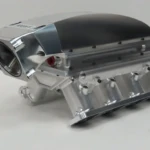Breaking the Filament Bottleneck: Landmark Study Verifies Granular PLA Matches Filament Performance in 3D Printing
H2: The Pellet Promise: Faster, Cheaper Printing Emerges
For years, the 3D printing industry has grappled with a paradox: while printing directly from plastic granules (pellets) offers potentially substantial cost reductions (up to 10x less per kg) and much faster extrusion rates for large-scale objects, skepticism persisted about the resulting part quality. Could the mechanical integrity truly match that of parts printed with standard filament? A rigorously designed study, funded by the European Space Agency (ESA) and published in Additive Manufacturing, definitively answers this question: Granular Material Extrusion (GME) parts perform as well as their Filament Material Extrusion (FME) counterparts.

H2: Methodology – Eliminating Variables in the PLA Showdown
Led by researcher Handai Liu, the study adopted an exceptionally thorough scientific approach to ensure results were irrefutable:
- Identical Material Source: The same PLA material from Verbatim was used in both forms – standard 1.75mm diameter filament and pellets created by precisely cutting the same exact filament into 1-2.5mm granules. This controlled for any inherent material property variations.
- Modified Printer Setup: A Creality Ender 3 Pro served as the base printer. For filament printing (FME), it was used unmodified. For pellet printing (GME), it was equipped with a Mahor pellet extruder head and a dedicated stepper motor driving a single screw extruder.
- Near-Identical Parameters: Critical printing parameters (layer height, temperature setpoint, bed temp, infill, etc.) were identical for both methods. Controlled variations only existed in extrusion rates and print speeds due to fundamental differences in material feed mechanisms.
- Comprehensive Mechanical & Chemical Testing: Beyond standard tensile and flexural tests, the researchers conducted:
- Impact Resistance Testing (Izod/Charpy)
- Hardness Testing (Shore D Scale)
- Scanning Electron Microscopy (SEM): Examining layer adhesion and fracture surfaces.
- Differential Scanning Calorimetry (DSC): Analyzing thermal transitions and crystallinity.
- Rheological Testing: Measuring melt flow behavior.
- Gel Permeation Chromatography (GPC): Determining molecular weight distributions.
- Thermogravimetric Analysis (TGA): Assessing thermal degradation.

H2: Revealing Results – Mechanical Properties Stand Equal
The core finding shatters previous concerns:
"The results show that the extrusion of filament-based materials (FME) and extrusion of granular materials (GME) produced no significant differences (p > 0.05) in the mechanical properties of the printed parts in terms of tensile properties, flexural strength and modulus, and impact resistance." – Liu et al.
H3: Where Minor Differences Emerged (And Why)
While mechanical performance was statistically equivalent, advanced analysis revealed subtle, explainable variations:
- Molecular Weight Slight Advantage (GME): GPC testing showed GME parts had a marginally higher average molecular weight. The study attributes this to the slightly lower actual melt temperature achieved in the pellet extruder’s heating chamber compared to the filament hotend. Crucially, the authors note: "Higher molecular weight leads to better tensile, flexural, and impact properties due to greater entanglement of polymer chains in the amorphous regions."
- Hardness Slight Advantage (FME): Filament-printed parts averaged a Shore D hardness of 82.28, compared to 81.44 for pellet-printed parts. This minor difference is attributed to a combination of factors:
- Surface Roughness: GME parts exhibited slightly higher surface roughness.
- Density: Filament parts showed marginally higher density.
- Both factors slightly influence the contact mechanics measured by Shore D.

H2: Beyond Cost – The Broader Implications of Granular Printing
Validation of mechanical parity unlocks significant advantages:
- Dramatic Cost Reduction: Eliminating the energy-intensive filament manufacturing step drastically lowers material cost.
- Increased Print Speeds: Higher volumetric flow rates with pellets enable much faster large-part production.
- Enhanced Material Flexibility: Direct printing from pellets enables:
- Seamless Recycling: Directly reusing production waste/scraps or post-consumer plastics, creating closed-loop systems.
- Processing Sensitive Materials: Printing compounds or composites unsuitable for the shear forces and thermal profiles of filament production.
- Expanded Material Palettes: Easier integration of specialty pellets (high-temp, flexible filled, etc.) without needing filament conversion.
- Workflow Simplification: Removing filament spool handling and storage.
H3: Real-World Implementation: Technology Maturation
While industrial pellet extrusion systems have existed, the study utilized and highlights accessible desktop solutions like the Mahor extruder and the independent Tumaker systems. This signifies a shift towards democratizing high-volume, low-cost 3D printing.
H2: Conclusion: A Paradigm Shift Validated
The meticulous ESA-funded research provides unequivocal evidence: Granular PLA extrusion (GME) produces finished parts with statistically indistinguishable mechanical properties from those printed with traditional filament (FME), while offering foundational advantages in cost, speed, sustainability, and material flexibility. Minor variances in molecular weight and hardness are scientifically explained and either beneficial or negligible for most applications. This foundational study validates GME as not just viable, but a strategically superior approach for numerous industrial and large-scale 3D printing applications. The bottleneck is broken; the era of cost-effective, high-speed, sustainable pellet printing has arrived.
plaintext
Source: Liu, H. et al. (2023). Mechanical Properties of Polylactic Acid Parts Printed by Material Extrusion with Granules: A Comprehensive Investigation. Additive Manufacturing, [Volume/Issue], [Page Range]. https://doi.org/…
Adapted from initial report via ALL3D.










































